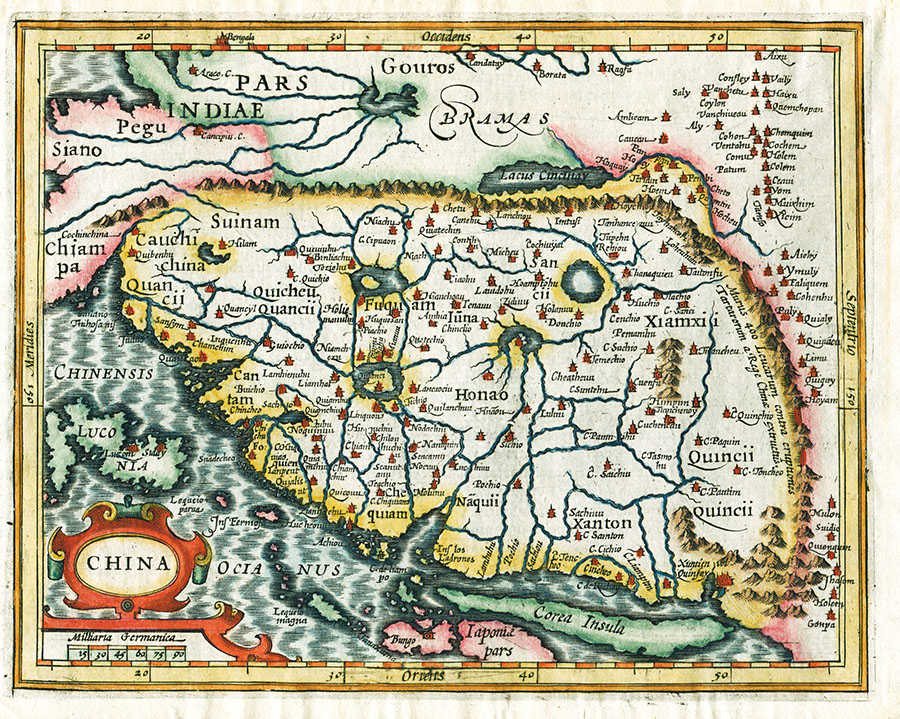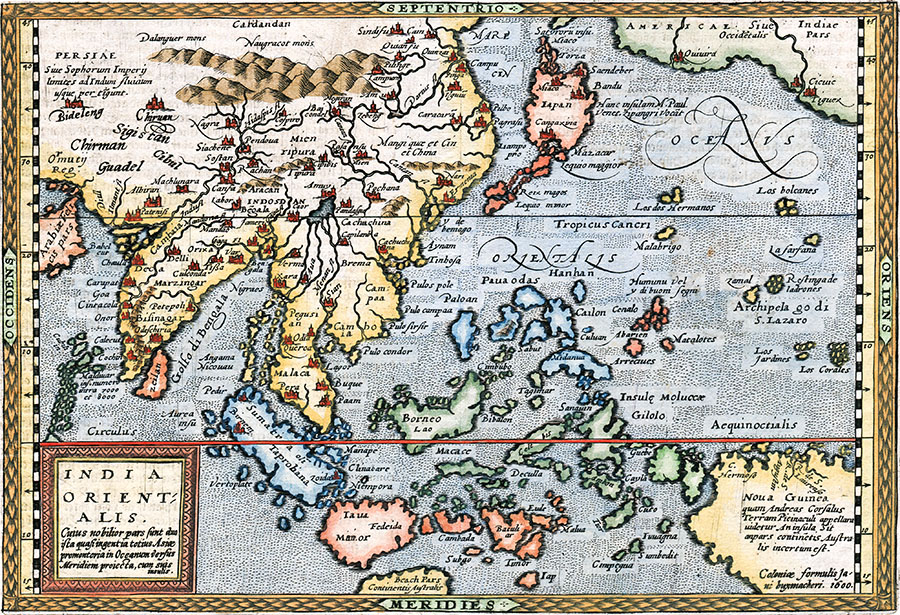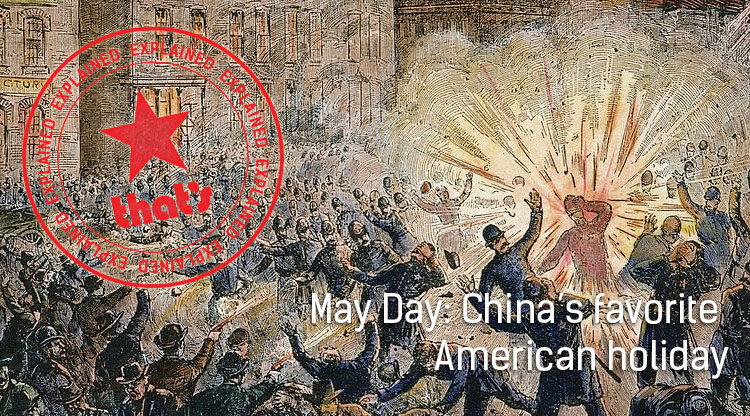Four hundred years ago, a new trading route linking Latin America with Asia put China at the heart of a globalizing world. So why do we see China as a historical recluse, asks Dr. Jonathan Chatwin, and what does it mean for today’s diplomacy?
Each winter, the elegant Swiss ski resort of Davos plays host to some of the world’s richest and most influential people. Besuited and entirely uninterested in the winter sports on offer, this coterie of billionaires, CEOs, politicians and celebrities convene to attend the annual meeting of the World Economic Forum, which modestly touts itself as ‘the foremost creative force for engaging the world’s top leaders in collaborative activities to shape the global, regional and industry agendas.’
The opening address of 2017’s meeting was delivered by Chinese President Xi Jinping who, in front of an audience rocked by a resurgence of nationalist sentiment in the West, offered a full-throated defense of globalization. “We should recede from our respective national positions and embark on the right pathway towards economic globalization at the right pace,” President Xi observed. “We should not develop a habit of retreating to the harbor whenever we encounter a storm, for this will never get us to the other side of the ocean.”
The notion of China as the world’s leading cheerleader for globalization raised a few eyebrows. The Chinese view of the wider world has been defined in recent times by a defiant nationalism, fuelled by the perception that the country had been, for the century before the establishment of the People’s Republic in 1949, subject to cynical exploitation by the global community. Newsweek’s headline ‘Xi Jinping’s Davos Speech Showed the World Has Turned Upside Down’ effectively captured the sense of incredulity in the West at the apparent reversal of international roles which had taken place post-Trump and -Brexit.
Yet the view of globalization as an intrinsically Anglo-American idea – one to which China has been unwillingly subjected – testifies to the West’s myopic view of history. For, as Peter Gordon and Juan José Morales remind us in their new book The Silver Way: China, Spanish America and the Birth of Globalization, 1565–1815, global economic networks with an outward-facing China at their center existed long before the emergence of America and Great Britain as the world’s major trading nations.

A map created by explorers on the first trading routes between Asia and Latin America
The Silver Way returns us to the 15th and 16th centuries, when the Spanish and Portuguese kingdoms led international trade and exploration. Having battled to establish global navigational routes, the two countries came to an agreement in 1494 which divided up Asia and the Americas between them. The Treaty of Tordesillas “gave Portugal all of Asia and the part of what is now Brazil that sticks out into the Atlantic,” Gordon and Morales write. “Meanwhile, everything west of the line went to Spain, granting them most of what came to be called, a few years later, the Americas.”
Despite this agreement, however, Spain desired access to the riches of Asia. In 1564, Miguel López de Legazpi led an expedition from Spanish-ruled Mexico to the Philippines – indisputably on the Portuguese side of the line – to establish a base in the Pacific from which to trade.
But in many ways, this was the easy part. Legazpi was joined by Andrés de Urdaneta, whose chief responsibility was to find a route back. Before Urdaneta, no Europeans had managed to sail east across the Pacific to South America, creating an obvious problem in returning goods purchased in Asia – in particular Chinese silk – to Europe. Urdaneta solved the problem, heading north to avoid the western-blowing trade winds, and finding a route which successfully returned him to Acapulco in October 1565.
“The Silver Way” is a term coined by Gordon and Morales to describe the route Urdaneta established from the Philippines to Mexico, which allowed two-way maritime trade between Europe and Asia via South America predicated on the first global currency – silver. The history of this trade route is not widely known in the West, the two authors observe: “History has been generally told not just from a Eurocentric point of view, as many Asians complain, but also an Anglo-centric one,” Morales says. “The English-speaking and the Spanish-speaking worlds have been particularly at odds for reasons of an old rivalry where the former had triumphed in the end.”
Gordon adds: “We remember history that is useful to us. As far as the English-speaking West is concerned, we had a historical narrative that explained Anglo-American world dominance pretty well.”

A map created by explorers on the first trading routes between Asia and Latin America
However, both authors saw the relevance of the analogy between the Pacific trade route and the globalized networks which have emerged in recent decades. Once again, these networks have China at their center: “China has opened up to foreign investment and repositioned itself again – as it started to be from the 16th century onwards – as the factory of the world,” Morales says.
The book also views the Silver Way as analogous to the earlier, and much better known, Silk Road. “In both cases,” the authors write, “a single commodity acted to bind disparate regions and peoples; the trade routes thus created were both engines of development and conduits for culture, philosophies and religions.”
President Xi Jinping has, of course, recently invoked the paradigm of the Silk Road in the ‘One Belt, One Road’ initiatives, which seek to encourage overland and maritime trade with Asia and Europe. The assertive approach China is currently taking in establishing its role as the major economic force in the Pacific region has been the cause of much disquiet in the US in particular.
Yet, the authors of the The Silver Way suggest that potential conflicts between China and the West might be avoided by the cultivation of a fuller understanding of their earlier economic relationships. As Gordon tells us, historical networks such as the Silver Way offer a template for a cooperative and mutually beneficial globalized economy.
“The Silver Way shows that there are alternatives where East and West have coexisted without one side dominating and where globalization continued and deepened, without either global institutions or national policies to that effect. The 21st century may not end up looking like the late 16th century – but it doesn't have to end up looking like the darkest days of the 20th century either.”
The Silver Way: China, Spanish America and the Birth of Globalization, 1565–1815 is available on Amazon






















0 User Comments